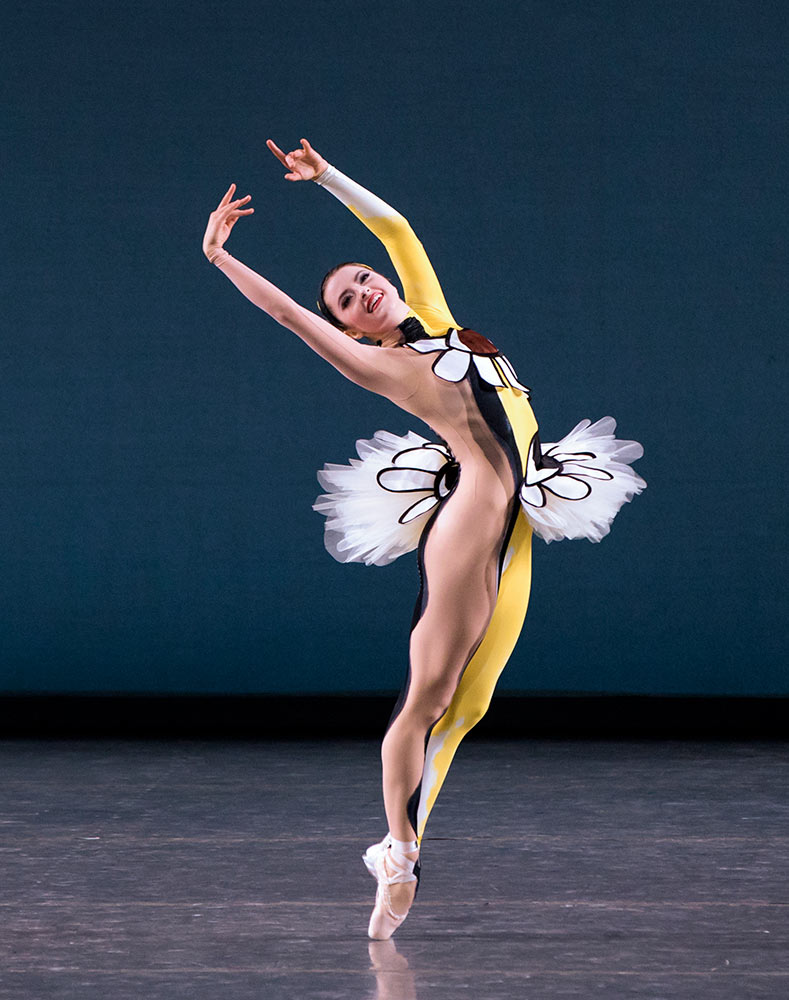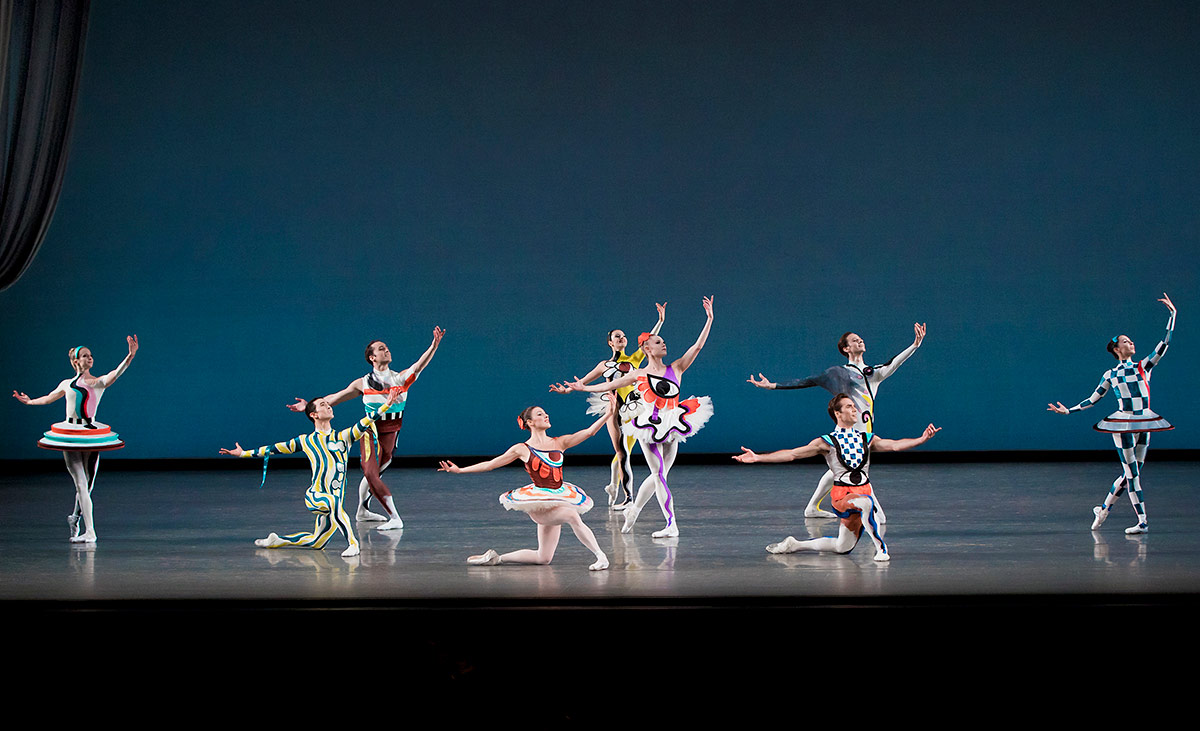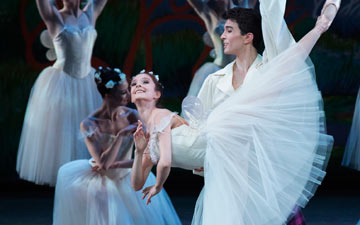
© Paul Kolnik. (Click image for larger version)
New York City Ballet
Fall Gala: The Wind Still Brings, Composer’s Holiday, Not Our Fate, Pulcinella Variations
★★★✰✰
New York, David H. Koch Theater
28 September 2017
www.nycballet.com
davidhkochtheater.com
The Young and the Restless
At New York City Ballet, the fall fashion gala has become a showcase for work by young choreographers. Each one is paired up with a fashion designer and voilà, it’s an event. More recently, it’s become almost an in-house affair. This year, all four of the choreographers had connections to the company. Three (Troy Schumacher, Lauren Lovette and Justin Peck) are dancers there, and one (Gianna Reisen) just graduated from the affiliated school before going off to become an apprentice at Dresden Semperoper.

© Paul Kolnik. (Click image for larger version)
So it’s no surprise that their works should share certain characteristics: speed, sharpness of attack, crisp musicality. Even the spirit that animates three of the four dances feels similar: free-spirited, eager, open, youthful. All include some form of same-sex partnering, though only one, Lauren Lovette’s Not Our Fate uses it in an emotionally probing way. Troy Schumacher’s The Wind Still Brings even has gender-neutral costumes, by Jonathan Saunders. Eroding ballet’s traditional gender roles seems to be the rule of the day. For the most part, though, the choreographers are unable or unwilling to treat emotion or drama with any specificity. The dancers are either generically cheerful or generically melancholy.

© Paul Kolnik. (Click image for larger version)
It was an evening filled with almost frenetic energy, that is, until Justin Peck’s Pulcinella Variations came along. Peck, now 30, has been City Ballet’s resident choreographer since 2014. His ingeniousness and musicality have left a deep impression from the beginning, but lately he has been expanding his palette, almost as if he were trying to broaden his outlook with each ballet. The Decalogue, created last season, was a stab at Balanchinean modernism; The Times Are Racing, from January, felt more like an anti-conformist manifesto. With Pulcinella, Peck appears to be looking back to an earlier time, exploring neoclassical structure, hierarchy, manners.

© Paul Kolnik. (Click image for larger version)
There is a whiff of Ballets Russes whimsy about the whole ballet. The costumes, by Tsumori Chisato, are brightly colored, witty, and a little zany, decorated with eyes and flowers, as if Picasso, Dali, and Karinska had gone into the tutu business together. They go very well with the commedia dell’arte theme that inspired Stravinsky’s original ballet score. Though Peck uses the suite rather than the full ballet, the sense that the dancers embody stock characters, each with his or her special talents and skills, remains. Peck follows the structure of the suite closely, assigning a duet or a solo to each piece. A pas de deux for Sara Mearns and Jared Angle, filled with tricky turns, has a grand, bravura texture, while the one for Tiler Peck and Gonzalo García is imbued with an endearing lightness. With Pulcinella, Peck has proven, to himself and to his audience, that he can deftly deploy classical form if he so desires. What’s missing, perhaps, is an individual touch, something that tells us exactly why he chose this particular music, this particular style. The ballet is skillful but impersonal.

© Paul Kolnik. (Click image for larger version)
Each of the other ballets has its charms, though, as I’ve noted, there was a lot of overlap. Schumacher’s ballet, The Wind Still Brings, is set to three movements of William Walton’s early piano quartet in D minor. It loses its way in a long middle section in which the dancers lie on the floor, as if sleeping, and take turns bourréeing across the stage, trading partners. In her ballet Composer’s Holiday Gianna Reisen offers striking images of dancers held aloft like apparitions, but fails to develop the theme in any serious way. But then, it’s her first work for the stage. Lovette’s Not Our Fate depicts conflicted emotion in a pair of pas de deux, one for two men (Taylor Stanley and Preston Chamblee), the other for a man and woman (Ask la Cour and Meaghan Dutton O’Hara). The first is more mysterious, more charged, but is ultimately dragged down, like the rest of the ballet, by the relentlessness of Michael Nyman’s music.

© Paul Kolnik. (Click image for larger version)
In all four ballets, the dancers look fantastic – motivated, committed, even elated. It must feel exciting and empowering to have their own colleagues make ballets for them. But the program lacks contrast and incisiveness – it’s lightweight. Ballet can do, and say, more.

















I love your commentaries, Marina, even without having seen the shows.
She’s a treasure indeed! Ed.
Thank you both